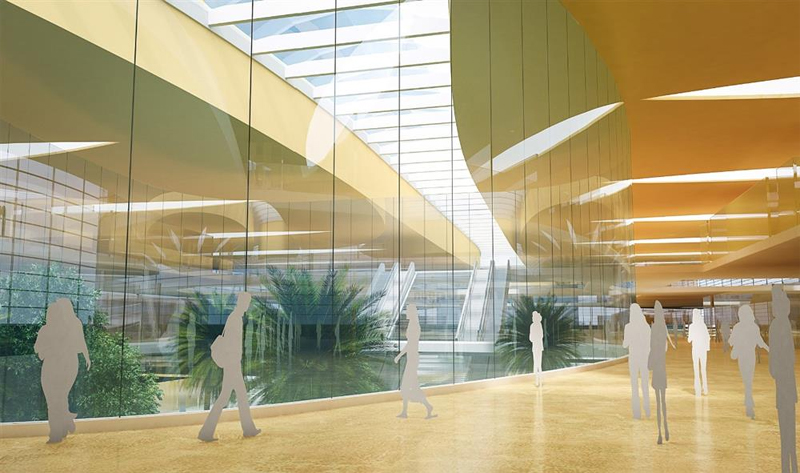The upcoming inter-modal station at Katra represents a significant leap forward in infrastructure development, poised to transform the holy town and its surrounding regions. This ambitious project, slated to begin in December, promises world-class amenities such as helipads, hotels, retail zones, and food courts, all designed to streamline and enhance transportation connectivity. As the heart of a multi-modal transport network integrating rail, road, and air travel, the inter-modal station will not only elevate Katra’s socio-economic profile but also set a benchmark for similar initiatives across India. The concept of an inter-modal station is rooted in the need for efficient and seamless transportation. By integrating various modes of transport-rail, road, air, and potentially even ropeways-into a single hub, the station aims to minimise the need for automobiles, thereby reducing traffic congestion and environmental pollution. The station at Katra spread over 32 acres, will serve as a central point for vehicles arriving from the New Delhi-Amritsar-Jammu-Katra Expressway, ensuring smooth entry and exit for all forms of transport.
One of the most compelling aspects of the inter-modal station is its potential to boost commercial development and economic activities. The project’s execution in the Engineering, Procurement, and Construction mode is expected to create numerous job opportunities, both during and after construction. Integrating commercial facilities such as hotels, retail zones, food courts, and entertainment areas will attract businesses and tourists, injecting new life into the local economy. The resultant increase in passenger footfall will drive commercial development, leading to higher returns on investment and improved economic productivity. The inter-modal station’s design prioritises passenger convenience and accessibility. Facilities such as waiting rooms, escalators, passenger lounges, medical centres, pharmacies, and baby care stations will cater to the diverse needs of travellers. Moreover, integrating the existing railway station with the new hub through a foot-over-bridge will ensure a seamless transition between different modes of transport. This holistic approach to infrastructure development not only enhances the travel experience but also promotes greater mobility for the elderly and disabled, ensuring inclusivity.
The project’s socio-economic impact extends beyond the immediate benefits of improved transportation and commercial opportunities. The development of shared infrastructure-such as foot-over bridges, concourses, and public conveniences-reduces the overall investment and land requirements, fostering greater efficiency and collaboration among multiple entities. This model of development, already being implemented in satellite railway stations at Ajni in Nagpur and Kashi in Varanasi, underscores the potential for replication in other parts of the country, setting a precedent for future projects.
Environmental sustainability is another critical objective of the inter-modal station. By reducing the reliance on automobiles and promoting the use of public transport, the project aims to lower energy consumption and minimise environmental pollution. This aligns with broader national and global efforts to combat climate change and promote sustainable development. The inclusion of green spaces and environmentally friendly design elements within the station’s infrastructure will further enhance its ecological footprint.
While the inter-modal station at Katra holds immense promise, its successful implementation will require meticulous planning, robust governance, and continuous stakeholder engagement. The approval of the DPR and subsequent tendering process are crucial milestones that will set the pace for construction. Ensuring the timely completion of the first phase, which focuses on the bus terminal, will be essential to maintaining momentum and public confidence in the project’s progress. Moreover, the involvement of local communities and businesses will be pivotal in driving the station’s success. Initiatives to engage and train the local workforce, promote local enterprises, and foster a sense of ownership among residents will contribute to the project’s long-term sustainability. Transparent communication and effective grievance redressal mechanisms will also be vital in addressing any concerns and building trust among all stakeholders. As the project takes shape, it holds the promise of ushering in a new era of growth, connectivity, and prosperity for Katra and beyond.
Trending Now
E-Paper


